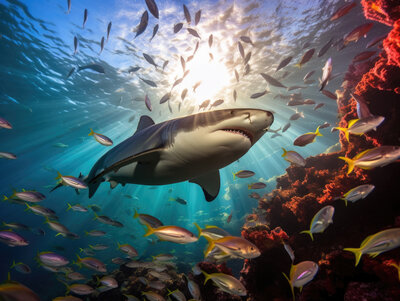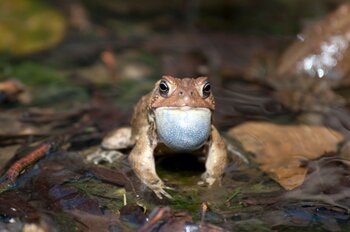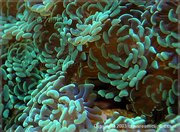Animals
|
|
Animals constituting the kingdom Animalia, are a diverse group of living organisms. While they exhibit immense diversity in form and function, they share a set of common characteristics that define them and distinguish them from other life forms. Animals are divided into various sub-groups, including birds, mammals, amphibians, reptiles, fish and insects.
| Contents |
|
1 Interesting facts about animals |
What are the Characteristics of Animals?
- Multicellular Organization: Animals are multicellular, meaning their bodies are composed of numerous cells. These cells are specialized and organized into tissues, which in turn form organs and organ systems.
- Heterotrophic Nutrition: Unlike plants, animals cannot synthesize their own food. They are heterotrophs that rely on ingesting other organisms or organic matter for sustenance.
- Nervous System: Animals possess a nervous system, which allows them to perceive and respond to their environment. This system ranges from simple nerve nets in cnidarians (jellyfish, for instance) to complex brains in mammals.
- Locomotion: Most animals have the ability to move, at least during certain life stages. This movement is facilitated by specialized organs like muscles and, in many cases, skeletal systems.
- Reproduction: Animals primarily reproduce sexually, although asexual reproduction is also observed in some groups. Sexual reproduction involves the fusion of gametes from two individuals, leading to genetic diversity.
- Cell Structure: Animal cells lack cell walls, a feature that distinguishes them from plants and fungi. They have a more flexible cell membrane, allowing for varied cell shapes and functions.
Structure
With a few exceptions, most notably the sponges (Phylum Porifera), animals have bodies differentiated into separate tissues. These include muscles, which are able to contract and control locomotion, and a nervous system, which sends and processes signals. There is also typically an internal digestive chamber, with one or two openings. Animals with this sort of organization are called metazoans, or eumetazoans when the former is used for animals in general.
All animals have eukaryotic cells, surrounded by a characteristic extracellular matrix composed of collagen and elastic glycoproteins. This may be calcified to form structures like shells, bones, and spicules. During development it forms a relatively flexible framework upon which cells can move about and be reorganized, making complex structures possible. In contrast, other multicellular organisms like plants and fungi have cells held in place by cell walls, so develop by progressive growth. Also, unique to animal cells are the following intercellular junctions: tight junctions, gap junctions, and desmosomes.
Reproduction and development
Animals undergo a series of developmental stages from zygote (fertilized egg) to adult form. This development involves cell division, differentiation, and growth. Some animals also undergo metamorphosis, a dramatic change in form after birth or hatching.Reproduction in animals is a fundamental biological process, ensuring the continuation of species. It exhibits a remarkable diversity of mechanisms and strategies, reflecting the adaptability of life to various environments and evolutionary pressures.
- Sexual Reproduction is the most commmon form of reproduction in animals, it involves the combination of genetic material from two parents, resulting in offspring with genetic diversity. This process generally involves the fusion of male and female gametes (sperm and egg). Such as Mammals, birds, most fish, and amphibians.
- In asexual reproduction, offspring are produced by a single parent without the involvement of gametes. This leads to offspring that are genetically identical to the parent. An example of asexual reproduction in animals is seen in the freshwater Hydra, a small, simple organism belonging to the phylum Cnidaria. Hydra predominantly reproduces asexually through a process called budding
What is the largest Phylum of Animals?
The largest phylum of animals in terms of the number of species is Arthropoda. This phylum includes insects, arachnids (such as spiders and scorpions), crustaceans (like crabs and lobsters), and myriapods (centipedes and millipedes). Arthropods are characterized by their jointed limbs and segmented bodies. Insects, which are part of this phylum, account for a significant majority of the species, making Arthropoda the most diverse and numerous phylum in the animal kingdom.
Interesting facts about animals
- Bats use echolocation to navigate and find food in the dark
- Some frog species can survive being frozen during winter
- Chameleons change color not just for camouflage but also to communicate and regulate their body temperature
- Many bird species possess a magnetic compass in their eyes
What is the largest and smallest of animals
- Smallest Animal: The smallest animals are likely microscopic endoparasites, but among multicellular organisms, tardigrades (water bears) and microscopic mites are contenders. Tardigrades can be as small as 0.05 mm (0.002 inches) in length.
- Largest Animal: The largest animal is the blue whale (Balaenoptera musculus). It's the largest animal ever known to have existed, with a maximum recorded length of over 30 meters (98 feet) and a weight of approximately 200 tonnes (440,925 pounds).
- Smallest Insect: The smallest known insect is a species of fairyfly, Dicopomorpha echmepterygis. The males of this species, which are wingless, can be as small as 0.139 mm in length.
- Largest Insect: The largest insects in terms of wingspan are some species of the giant tropical South American butterfly, the Queen Alexandra's birdwing (Ornithoptera alexandrae), with wingspans up to about 28 cm (11 inches). In terms of body mass, the heaviest is the Goliath beetle (Goliathus spp.), which can weigh up to 100 grams (3.5 ounces) in the larval stage.
- Smallest Mammal: The title for the world's smallest mammal is shared between the Etruscan shrew (Suncus etruscus) and the bumblebee bat (Craseonycteris thonglongyai), depending on the measurement criteria (weight or length). The Etruscan shrew weighs about 1.2-2.7 grams and measures 3-5 cm in body length, while the bumblebee bat is about the same size but may be lighter in weight.
- Largest Mammal: As mentioned earlier, the blue whale is not only the largest animal but also the largest mammal. On land, the largest mammal is the African elephant (Loxodonta africana), which can weigh up to 6,350 kg (14,000 lb) and stand 3-4 meters (10-13 feet) at the shoulder.
Origin and fossil record
![Image provded by [http://classroomclipart.com Classroom Clipart]](/encyclopedia/images/thumb/2/24/180px-Fossil3.jpg)
Animals are generally considered to have evolved from flagellate protozoa. Their closest living relatives are the choanoflagellates, collared flagellates that have the same structure as certain sponge cells do. Molecular studies place them in a supergroup called the opisthokonts, which also include the fungi and a few small parasitic protists. The name comes from the posterior location of the flagellum in motile cells, such as most animal sperm, whereas other eukaryotes tend to have anterior flagella.
The first fossils that might represent animals appear towards the end of the Precambrian, around 600 million years ago, and are known as the Vendian biota. These are difficult to relate to later fossils, however. Some may represent precursors of modern phyla, but they may be separate groups, and it is possible they are not really animals at all. Aside from them, most animal phyla with known phyla make a more or less simultaneous appearance during the Cambrian period, about 570 million years ago. It is still disputed whether this event, called the Cambrian explosion, represents a rapid divergence between different groups or a change in conditions that made fossilization possible.
Groups of animals
The sponges (Porifera) diverged from other animals very early on. As mentioned, they lack the complex organization found in most other phyla. The cells are differentiated, but not organized into distinct tissues. Sponges are sessile and typically feed by drawing in water through pores all over the body, which is supported by a skeleton typically divided into spicules. The extinct Archaeocyatha, which have fused skeletons, may represent sponges or a separate phylum.
History of classification
In Linnaeus' original scheme, the animals were one of three kingdoms, divided into the classes of Vermes, Insecta, Pisces, Amphibia, Aves, and Mammalia. Since then the last four have all been subsumed into a single phylum, the Chordata, whereas the various other forms have been separated out. The above lists represent our current understanding of the group, though there is some variation from source to source.
Examples
Some well-known types of animals, listed by their common names:
- alpaca, ant, antelope, badger, bear, bee, beetle, bird, bison, butterfly, cat, chicken, cockroach, coral, cow, dinosaur, dog, dolphin, earthworm, elephant, elk, fish, fly, fox, frog, giraffe, goat, gorilla, horse, human, jellyfish, lion, lizard, lynx, monkey, octopus, owl, ox, parrot, penguin, pig, rabbit, rat, rhinoceros, salamander, scorpion, seahorse, shark, sheep, sloth, snake, spider, squid, starfish, turtle, whale, wolf, yak, zebra
See also
| List of Animals| Complete List of Animals by Letter | |
| List of Animals | Animal A| Animal B | Animal C | Animal D | Animal E | Animal F | Animal G | Animal H | Animal I | Animal J | Animal K | Animal L | Animal M | Animal N | Animal O | Animal P | Animal Q | Animal R | Animal S | Animal T | Animal U | Animal V | Animal W | Animal X | Animal Y | Animal Z |
|---|---|
| Animal Pictures and Photographs |
|
| Animal Videos and Sounds |
|





